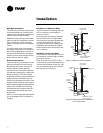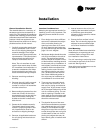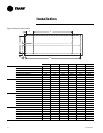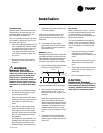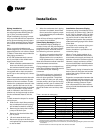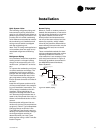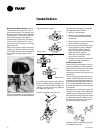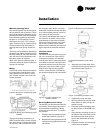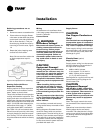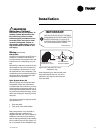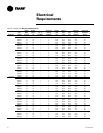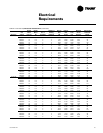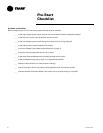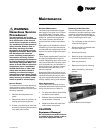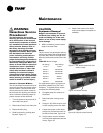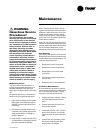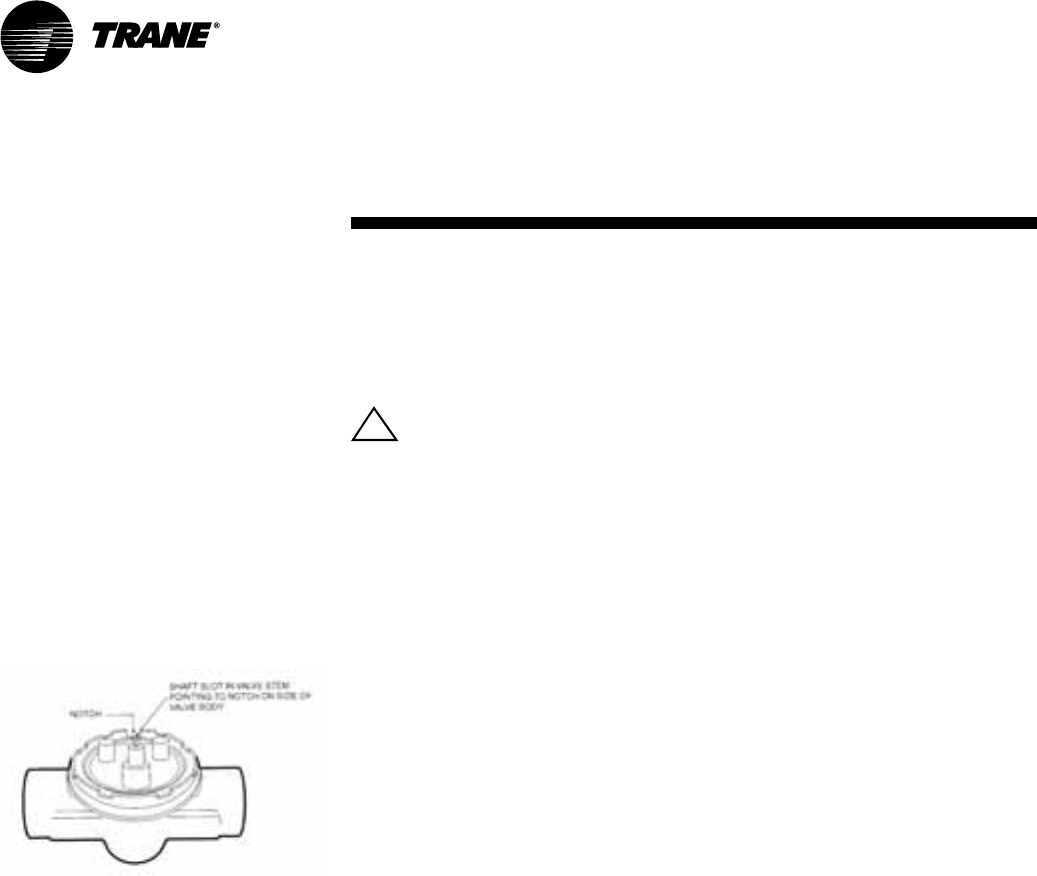
22 UV-SVN03D-EN
Soldering procedures are as
follows:
1 Remove actuator as stated earlier.
2 Place valves on the pipe. Rotate
valve stem so the shaft slot points
at the notch in the side of the body
(90° to flow direction). This pro
-
tects the plug inside the valve by
removing it from the seat, Figure
14.
3 Sweat the joints, keeping outer
surface free from solder.
Note: Do not use silver solder due
to high temperature require-
ments.
Figure 14: Preparation for soldering
Heating Coils with Direct
Expansion Cooling
Heating options for direct expansion
cooling in the unit ventilator are hot
water, steam or electric heat.
These coils facilitate direct expansion
cooling with standard capacities. The
supply and return connections are lo
-
cated in the right hand end pocket. Hot
water field connections are made with
a 5/8’’ \[15.9\] OD male sweated joint,
while steam coils have a 1’’ \[25.4\]
male pipe thread (MPT) connection.
See Table 7 for coil connection sizes.
Electric heat coils provide a third way
to supply heating to the direct expan
-
sion cooling. The coil utilizes three to
six preheat elements which are factory
wired.
Wiring
All classroom unit ventilators have
115V motor power. Motor data can be
found in Tables G1.
Control Power
WARNING
Hazardous Voltage!
Disconnect all electric power, in-
cluding remote disconnects be-
fore servicing. Follow proper
lockout/tagout procedures to en-
sure the power can not be inad-
vertently energized. Failure to
disconnect power before servic-
ing could result in death or seri-
ous injury.
CAUTION
Equipment Damage!
-Wiring diagrams provided in this
manual are for reference only. Ac-
tual wiring for particular options/
units may vary. Refer to the dia
-
gram provided on the equipment
for specific information. Failure to
do so may result in equipment fail
-
ure.
-When installing field provided
controls, do not alter or remove
any built-in unit safeties. Tamper
-
ing with unit safeties may cause
unit overheating and possible fire
hazard.
-Do not remove or alter the wiring
of the Time Delay Relay (DL). Do
-
ing so may result in premature
motor failures.
Unit ventilator controls and control
wiring can be factory mounted or field
installed.
Wiring diagrams illustrate the stan-
dard unit motors with one and two
speed control. Terminal wiring is pro-
vided by Trane and the actual compo-
nents used for a particular installation
may differ. Control and line diagrams
for the exact control system used are
provided with each unit.
Supply Power
CAUTION
Use Copper Conductors
Only!
Unit terminals are not designed to
accept other types of conductors.
Failure to use copper conductors
may result in equipment damage.
Power supply wiring is to be connect-
ed to terminals 1 and 2 at the junction
box in the left end pocket, below the
discharge air grille.
Electric Heat (option)
Supply Power
Supply power wiring is to be connect-
ed to the following line terminals in
the right hand end pocket:
• 208V or 240V, 3-phase,
3 wire system: L1, L2 and L3.
• 480V, 3-phase, 4 wire system:
L1, L2, L3 and N (neutral)
See Page 34 for a typical unit line and
interconnecting wiring diagram for
Electric Heat Coils.
CAUTION
Equipment Damage!
480 V/3-Wire is NOT compatible
with Trane Classroom Unit Venti-
lator equipment. There must be a
4-wire system with a separate
ground. Failure to provide a 4-wire
system may result in equipment
damage.
Note: The supply neutral wire must
be connected to the neutral terminal
block.
Operational controls and an electric
heating safety device are factory
mounted. The safety device is a high
temp cut-out which de-energizes elec
-
tric heating elements through the K1
safety contactor.
Installation
!



